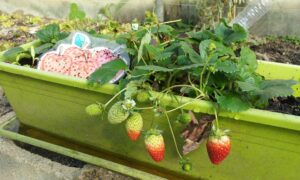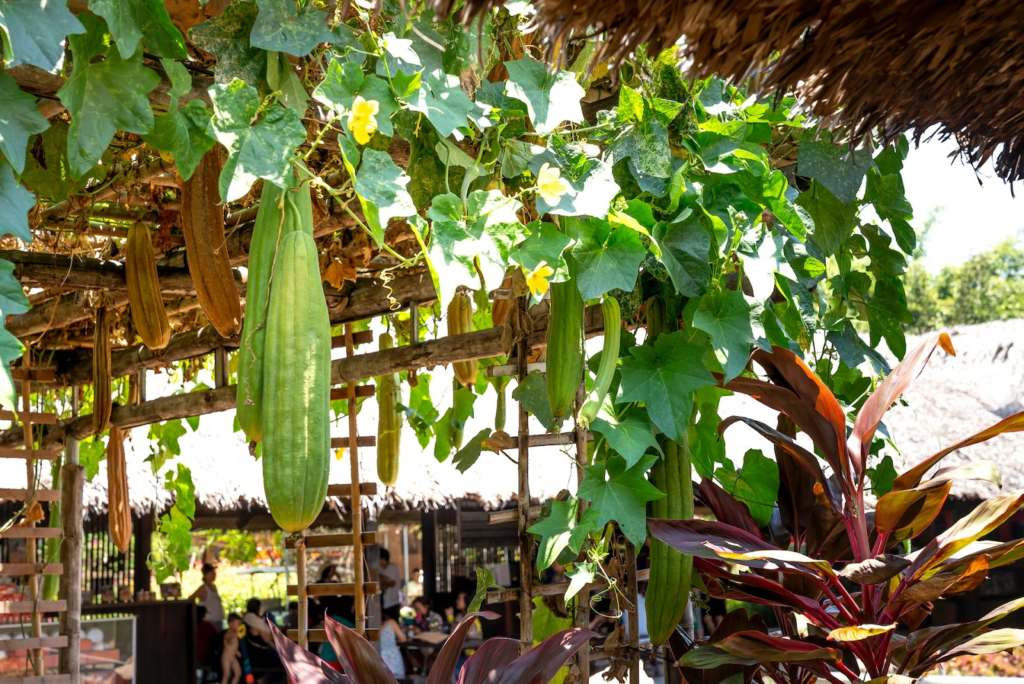Physical Address
23,24,25 & 26, 2nd Floor, Software Technology Park India, Opp: Garware Stadium,MIDC, Chikalthana, Aurangabad, Maharashtra – 431001 India
Physical Address
23,24,25 & 26, 2nd Floor, Software Technology Park India, Opp: Garware Stadium,MIDC, Chikalthana, Aurangabad, Maharashtra – 431001 India

By Vivek Saini
In Indian metropolises, urban and peri-urban agriculture (UPA) is becoming more and more popular as a means of promoting environmental protection and sustainable development.
Despite possible overstatement, a study from IIT-Madras revealed that UPA “can play a small, but not insignificant role” in increasing carbon stocks and lowering land surface temperatures in urban areas.
What is urban and peri-urban agriculture?
One of the most intriguing trends in recent decades in land management and transformation is urban and peri-urban agriculture (UPA). Due to its many purposes, it can be used as a viable method to build food and urban systems that are more resilient and sustainable, as well as to deal with global emergencies like food insecurity, climate change, and economic crises.
Cities and regions are particularly sensitive to climate change as a result of variables including high population density, significant socioeconomic vulnerability, food poverty, and significant concentrations of material and cultural resources.
Cities’ expenses for adapting to climate change can be decreased by encouraging urban and peri-urban agriculture (such as on rooftops, community gardens, etc.). Furthermore, it promotes local resilience and sustainability, as well as job growth, waste recycling, sustainable food production, and diet education.

Image 1.
How a citizen-led movement popularized this farming technique?
Imagine going up to your rooftops or balconies and foraging for vegetables and herbs, says Rajendra Hegde, a 53-year-old agricultural entomologist, in front of a big audience in Bengaluru every few weeks. His childhood memories of his village of Honnavar in coastal Karnataka, where everyone was a home gardener or farmer, are what inspired this vision.
Hegde experienced a sense of separation after relocating to Bengaluru in 2002. In a landscape of concrete, there were just a few isolated green areas. Three years later, he collaborated with colleague entomologist Vishwanath Kadur on a campaign to get residents to start terrace gardening. They established the Garden City Farmers Trust in 2011, a group that works to promote urban agriculture. Every three months, they hold their most well-known event, “Oota from Your Thota ‘‘ which translates to “food from your garden” in Kannada. The one-day event, which focuses on organic urban agriculture, is held in Bengaluru’s densely populated residential districts and includes speakers, seminars, stalls, and marketplaces. The event is currently in its 41st year.

Image 2. Dr. Vishwanath, an entomologist, in his terrace garden
How can it reduce the environmental burden?
There are three interrelated issues: urbanization, climate change, and food security. By 2050, it is predicted that more than 70% of the world’s population will reside in cities. Over 75% of the world’s resources are consumed by urban regions, which also produce 50% of the world’s garbage and over 70% of its greenhouse gasses (GHGs). In addition, cities require a growing amount of food due to their rapid population increase, but at the same time, their expansion lowers urban and peri-urban green areas and pushes away food production, which should be positioned close to consumption centers in order to be sustainable.
The IPCC’s Fifth Assessment Report emphasizes the necessity and urgency of reducing greenhouse gas emissions and the need to adjust the urban system to unfavorable effects through strategies that boost resilience. It is widely acknowledged that metropolitan areas are to blame for climate change. However, adaptation in urban settings can be the answer to difficulties caused by climate change. As a result, metropolitan areas should increasingly be the focus of sustainable development concerns.
Urban areas must adapt to the repercussions of climate change and lessen and minimize their impact on it by lowering their CO2 production and increasing their capacity for CO2 sequestration and storage. Urban flooding (UF) and Urban heat island (UHI) are often the main effects of climate change in Mediterranean urban settings.
What have researchers said?
Currently, the majority of Indian cities are a jumble of haphazardly constructed concrete buildings, urban heat islands, air pollution, and rising greenhouse gas emissions. And in the upcoming years, things are anticipated to significantly worsen.
As a potential strategy to stop this trend, urban and peri-urban agriculture (UPA) has begun to gain appeal in Indian metropolises. It is hoped that through promoting agriculture and horticulture in and around cities, some type of climate action will be encouraged, increasing the sustainability and liveability of the Indian metropolis. Urban and Peri-Urban Agriculture is the “savior of rapid urbanization,” according to ICAR-Indian Agricultural Research Institute researchers.
Researchers at the Indian Institute of Technology, Madras (IIT-M) found in a study published in September 2022 that UPA “can play a small, but not insignificant role” in increasing carbon stocks and lowering land surface temperatures in urban areas. In order to predict the growth potential in 2032 and 2041, respectively, researchers projected the urban growth tendencies of Bengaluru and Chennai, which together cover more than 7,000 sq. km. of urbanized area and suburbs. The significant rate of urbanization in these two cities was a deciding factor; in Bengaluru, for example, the built-up area expanded from 16% in 2011 to 32% by 2020.
The mean land surface temperature in Bengaluru was predicted to decrease by 0.35°C in 2032 if 1.25 lakh people — slightly more than Garden City Farmers Trust’s goals — engage in urban farming. There was a drop in temperature in Chennai of 0.04°C to 0.07°C. What is more significant, though, is that Bengaluru’s enhanced bio-mass from urban farming has the potential to store at least 1.3 lakh tonnes of carbon dioxide. The research article claims that despite the tiny figures, they cannot be disregarded.
Pros and cons of Peri-Urban agriculture
Peri-urban farms are having considerably more of an impact, according to Mahalingam, one of the authors of the study. They are looking into ways to reduce travel emissions as one of the possible advantages. Because trucks and freight vehicles must travel hundreds of kilometers to transport produce from distant rural areas, this process is carbon-intensive. It might be less harmful to the environment if they were purchased locally.
The group examined the demand for tomatoes and brinjals in Chennai over a lifespan. They created a model to show the carbon footprint of obtaining these items from traditional rural farms, peri-urban areas, and metropolitan areas.
However, in India, pressure on peri-urban agriculture is extremely high. Building homes and apartments is significantly more profitable for landowners than farming due to high land costs. Additional difficulties include low yield brought on by soil and groundwater degradation, as well as diminishing water supplies. According to a recent study by the IIM Ahmedabad that examined the potential of horticulture farming in Dehradun, Ahmedabad-Gandhinagar, and Panaji, rising temperatures and fluctuating rainfall will also cause a drop in the output of several crops. A policy should be created to help farmers switch from crops whose yields would decrease owing to warming temperatures (tomatoes, beans, and cabbage) to ones whose yields will either remain stable (potatoes and onions) or rise (mangoes).
References:
Image 2 source: https://www.indiatimes.com/news/india/an-urban-farming-group-in-bengaluru-is-teaching-people-home-agriculture-to-fight-pollution-322845.html